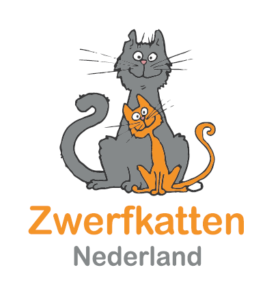On this page you will find projects from our affiliated foundations and initiatives from Stray-AFP.
Dutch Stray Cats (Zwerfkatten Nederland)
In Holland we don’t have free roaming dogs. But we have stray cats. To make the Netherlands stray cat poor without killing them we started the Dutch stray cats project.
Ingredients:
- Regional trap-neuter-return projects,
- Central coordination and registration
- Cooperation stakeholders
- Cooperation with government
- Research
 World Stray Animals Day
World Stray Animals Day
April 4 is the day to give special attention to the 600.000.000 stray animals in the world.
Dogs and cats should have a home. But stray dogs and stray cats don’t. They lead poor and miserable lives on the streets. They are often illfed, suffer from extreme heat or cold, and suffer from diseases. Even more often, they’re being chased around by hostile and violent people. But we, as people who care about animals, can do something.
April 4 is the day to show compassion, take care, and get into take action for stray animals all over our planet.
Help us spread the word. Tell, tweet, link, recommend, post, blog, like and share our cause with all your friends. Show the world you care.We encourage people all over the world to organize local charity, educational, and fundraising events on April 4.
(World Stray Animals Day started in the Netherlands and is an idea of stray animal organizations and Stray-AFP)
How Holland became stray dog free
Together with the Dutch Dog Protection Agency (Hondenbescherming) Stray-AFP did investigate how the Netherlands became a stray dog poor country. The result of this research can be downloaded here
International Stray Animal Team (ISAT)

Each time when big international sporting events are organized in countries with big stray animal populations massive killings of these strays are the horrible reality. Killing of stray animals doesn’t solve the stray animal overpopulation problem and is unnecessary and cruel. There are other solutions that are more humane and work better in the long-term.
The International Stray Animal Team (ISAT) wants to make clear to all countries that are preparing for international sporting events and involved sports associations that humane solutions for the stray animal problem are a MUST. Our first step will be recognition for the problem and recognition for the fact that humane solutions are the only option.
- The second and future step will be to offer our network of professionals and volunteers to assist in the humane approach
Step 1 Recognition for the problem and recognition for the fact that humane solutions are the only option
For this we designed a Joint statement of animal welfare organizations or individuals on planning for humane stray animal population management ahead of international Sports Events
Joint Statement
Joint statement of animal welfare organizations or individuals on planning for humane stray animal population management ahead of international Sports Events
In countries with an important population of stray animals, international sporting events (Olympic Games, World Championships, etc.) lead most of the times to massive culling initiatives. Aside from the obvious ethical problem that the culling of otherwise healthy animal poses, the culling methods tend to lead to avoidable animal suffering. With forward planning, more humane and efficient solutions (ABC projects, CNVR projects and TNR projects1) are available.
The undersigned organizations and individuals hereby call upon all the countries and regions preparing for an international sporting even to plan use exclusively humane solutions to deal with stray animals.
In addition, we appeal to the sports organizations such as FIFA and IOC to take a clear position in the managing of stray animal populations ahead of each event.
For both regional authorities and sport organizations, we recommend that:
- Stray population management becomes an integral part of the planning for international sporting events
- Sufficient funds be allocated for humane solutions (Depending on the country between € 35 and € 80 per animal)
- Sufficient time be allocated for the stray population management (depending on the population, a three to four years preparation phase is recommended).
- Consulting with experienced organizations2
1 Trap-Neuter-Return is a method of humanely trapping stray animals, spaying or neutering them, and releasing them back. TNR is promoted by several animal welfare organizations as a humane and effective alternative to euthanasia for managing and reducing stray animal populations. 2 For example; WSPA, IFAW, Four PAWS, RSPCA, Stray AFP, the Humane Society
To sign the joint statement click here
Articles on humane stray animal population management
Humane_Dog_Population_Management_Guidance_English – ICAM
WSPA_RSPCA International stray control practices in Europe 2006_2007
Do you want to have more info: info@stray-afp.org

